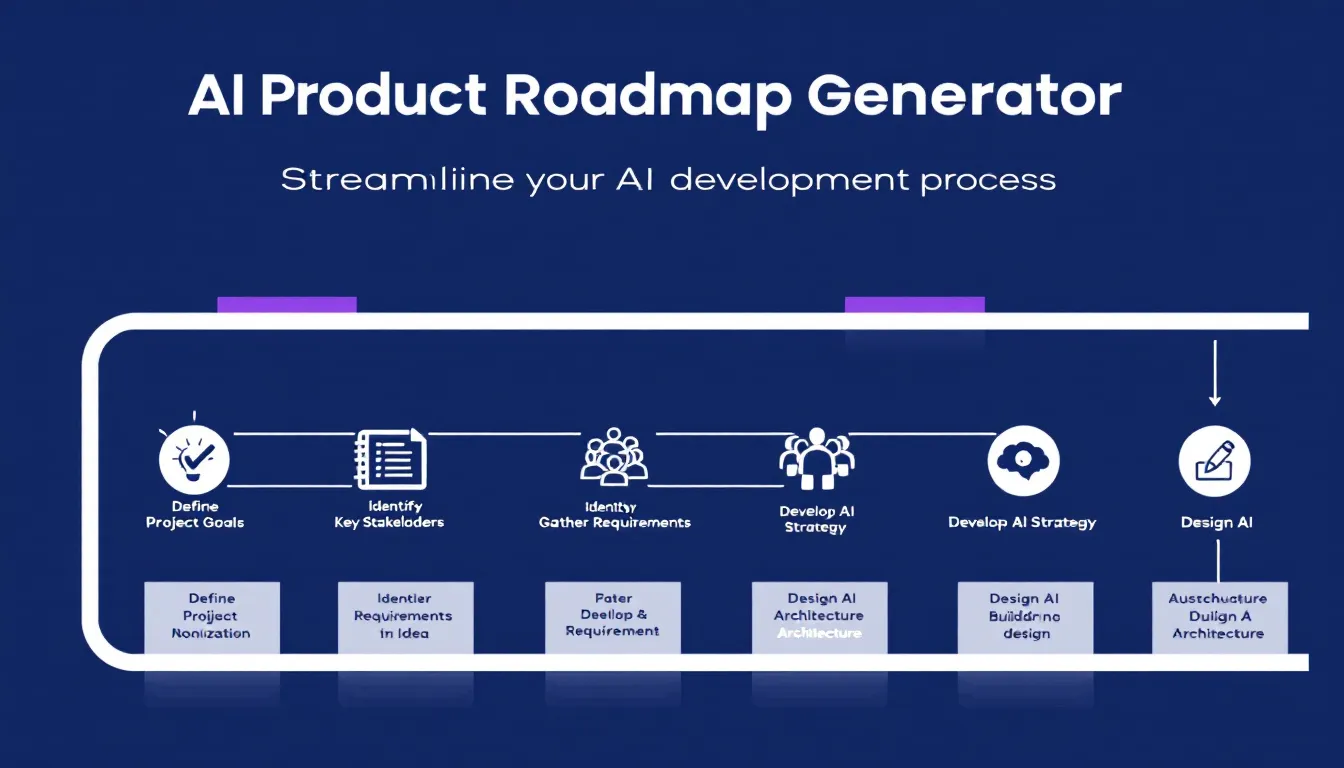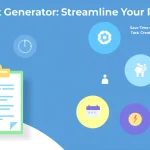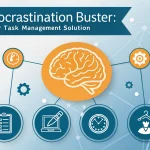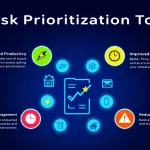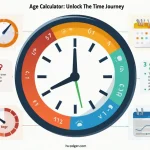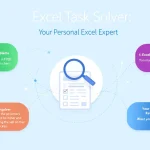AI Product Roadmap Generator
Generating roadmap...
Is this tool helpful?
How to Use the AI Product Roadmap Generator Effectively
Step-by-Step Instructions
Follow these steps to create an accurate and detailed AI project roadmap:
- Project Name: Enter the name of your AI initiative. For example, “Smart Traffic Management System” or “AI-Powered Language Translation.”
- Project Description: Provide a clear summary of your AI project’s goals and features. For instance, “Design an AI-based system to optimize traffic flow using real-time data and predictive analytics” or “Develop a multilingual AI translator for instant communication across languages.”
- Start Date: Pick your desired project start date using the calendar picker.
- Include Standard Phases: Choose “Yes” to add common AI development phases like data preparation, model training, and testing. This helps you follow industry best practices.
- Include Weekends: Decide whether to count weekends in your project timeline. Selecting “No” schedules tasks within weekdays only.
- Working Hours per Day: Specify daily working hours to fine-tune timeline estimates, such as “6” for part-time or “9” for extended daily shifts.
- Auto-generate Tasks: Opt to have the tool suggest key tasks based on your description. This uncovers critical steps you might miss.
- Generate Roadmap: Click the button to produce your tailored AI product roadmap with task timelines and visual charts.
Understanding Your Results
Once generated, review your roadmap to find:
- A detailed breakdown of tasks with start and end dates, durations, and dependencies
- A visual Gantt chart that maps your project timeline clearly
- Insights on resource allocation based on your inputs
- Options to save or share your roadmap for team collaboration
Introducing the AI Product Roadmap Generator: Definition, Purpose, and Benefits
What Is the AI Product Roadmap Generator?
This AI Product Roadmap Generator is a web-based tool crafted to help you plan comprehensive project timelines specific to AI development. It uses your input and combines it with standard AI development phases along with AI-driven task suggestions to design a realistic and actionable project plan.
Why Use This Tool?
Planning AI projects involves juggling many complex, interrelated tasks and evolving technologies. This tool simplifies that process by:
- Saving you time by automating the creation of detailed roadmaps
- Improving task scheduling accuracy and minimizing errors
- Providing clear and intuitive visualizations of your project timeline
- Allowing customization to suit your project’s unique needs
- Using AI-powered insights to suggest relevant tasks you might overlook
Practical Applications of the AI Product Roadmap Generator
How This Tool Helps You Manage Complex AI Projects
AI projects usually require careful coordination between many tasks with dependencies. The AI Product Roadmap Generator addresses these complexities by:
- Automatically calculating task durations and end dates, considering dependencies
- Creating visual representations that show how tasks relate and overlap
- Letting you adjust timelines easily as requirements change
Example: Calculating Task Durations and Dependencies
Imagine a project with two linked tasks in an AI fraud detection system development:
Task 1: Data Acquisition and Cleaning
- Start Date: July 10, 2024
- Duration: 12 working days
Task 2: Algorithm Training (depends on Task 1)
- Duration: 8 working days
The tool calculates the dates like this:
$$ \text{End Date of Task 1} = \text{July 10, 2024} + 12 \text{ working days} = \text{July 24, 2024} $$$$ \text{Start Date of Task 2} = \text{End Date of Task 1} = \text{July 24, 2024} $$$$ \text{End Date of Task 2} = \text{July 24, 2024} + 8 \text{ working days} = \text{August 1, 2024} $$This timeline respects dependencies and excludes weekends if configured.
Optimizing Resource Allocation
Use the tool to balance workload by:
- Setting daily working hours for your team
- Measuring task effort to avoid overloading team members
- Identifying possible resource conflicts early
Example: Calculating Resource Utilization
Suppose a developer handles these concurrent tasks:
Task A: Model Feature Development
- Duration: 6 days
- Effort: 60% (5 hours per day)
Task B: Model Validation
- Duration: 6 days
- Effort: 30% (2.5 hours per day)
Resource usage is calculated as:
$$ \text{Total Assigned Hours} = (6 \times 5) + (6 \times 2.5) = 45 \text{ hours} $$$$ \text{Total Available Hours} = 6 \times 8 = 48 \text{ hours} $$$$ \text{Resource Utilization} = \frac{45}{48} \times 100\% = 93.75\% $$This result helps you avoid overworking your team and plan realistic deadlines.
Real-World Use Cases: Applying the AI Product Roadmap Generator
1. AI Startup Project Planning
A startup building a personalized AI tutoring app can utilize the tool to:
- Map out all development stages from concept to deployment
- Schedule limited resources smartly during peak development phases
- Visualize milestones to impress investors with a clear deliverable timeline
2. Large Enterprise AI Rollout
Corporations implementing AI customer support chatbots use the tool to:
- Break complex tasks into manageable sprints
- Coordinate cross-team work between AI developers and IT
- Track progress clearly for management reporting
3. Academic AI Research Project Management
Researchers developing new natural language processing algorithms benefit by:
- Structuring phases like literature review, model design, and evaluation
- Optimizing use of research assistants and compute resources
- Keeping timelines transparent for grant reporting and collaboration
Important Disclaimer
The calculations, results, and content provided by our tools are not guaranteed to be accurate, complete, or reliable. Users are responsible for verifying and interpreting the results. Our content and tools may contain errors, biases, or inconsistencies. Do not enter personal data, sensitive information, or personally identifiable information in our web forms or tools. Such data entry violates our terms of service and may result in unauthorized disclosure to third parties. We reserve the right to save inputs and outputs from our tools for the purposes of error debugging, bias identification, and performance improvement. External companies providing AI models used in our tools may also save and process data in accordance with their own policies. By using our tools, you consent to this data collection and processing. We reserve the right to limit the usage of our tools based on current usability factors.
